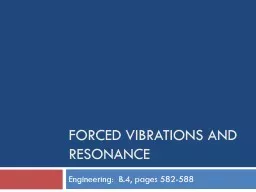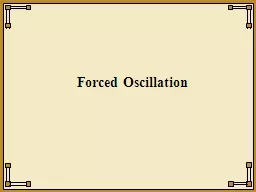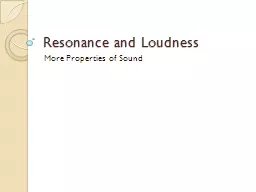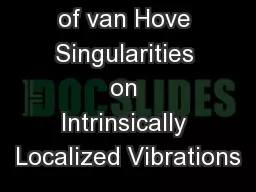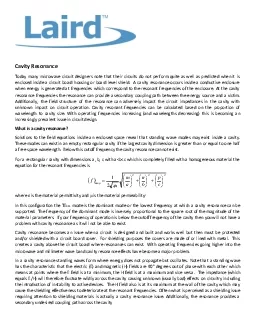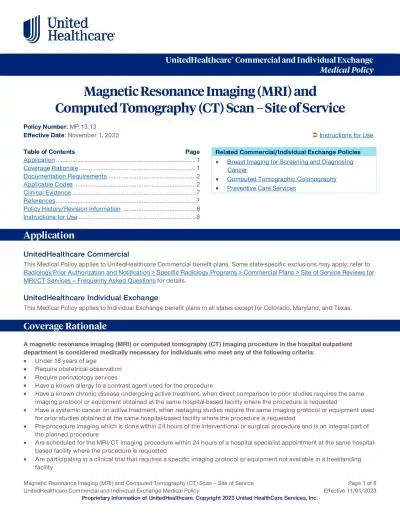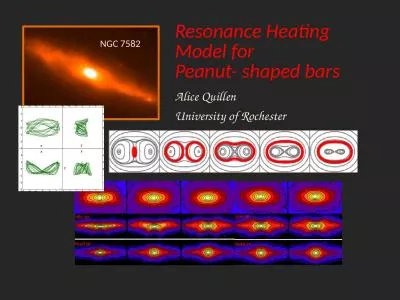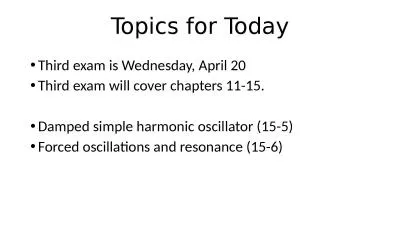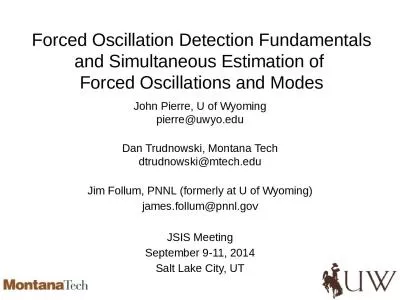PPT-Forced vibrations and resonance
Author : briana-ranney | Published Date : 2017-08-21
Engineering B4 pages 582588 Free Vibration A mass is free to oscillate No external forces acting on the mass Amplitude frequency periodall constant Natural Frequency
Presentation Embed Code
Download Presentation
Download Presentation The PPT/PDF document "Forced vibrations and resonance" is the property of its rightful owner. Permission is granted to download and print the materials on this website for personal, non-commercial use only, and to display it on your personal computer provided you do not modify the materials and that you retain all copyright notices contained in the materials. By downloading content from our website, you accept the terms of this agreement.
Forced vibrations and resonance: Transcript
Download Rules Of Document
"Forced vibrations and resonance"The content belongs to its owner. You may download and print it for personal use, without modification, and keep all copyright notices. By downloading, you agree to these terms.
Related Documents

